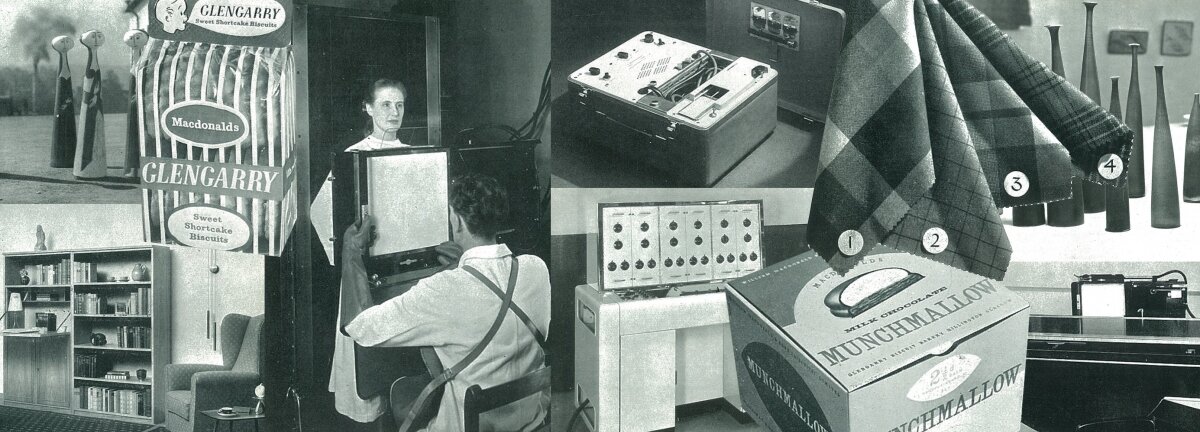70 years of great design: then and now

Design Council may have been around for 70 years, but our founders would still recognise and understand the work we do today. Our Events Manager, Bethany Winning, compares our work then and now.
Last week, as we were putting the finishing touches on our new digital timeline of Design Council’s 70 year history, I had a quick flick though some old editions of Design magazine in the hope of finding a useful picture or two. Design was the journal of The Council of Industrial Design and was published from 1949 until 1999.
I was browsing editions from 1952, the early days of both the magazine and the Council itself. What surprised me was how many of the pieces would still work on our website today, and how many parallels there were with current projects.
Medical Equipment / Designing Bugs Out
In the July 1952 edition of Design (alongside a column about souvenirs for the upcoming coronation, and a special Rayon supplement) is an article with the rather dreary title “Medical Equipment”. What caught my eye was a sub-heading “Design requirement 1: hygiene”. It talks about the standards set by the Ministry of Health and how equipment must be designed so it can be easily sterilised or “sufficiently waterproof to permit sponging down or washing, and the avoidance of narrow crevices which might retain dirt is essential”.
This is also the basis of our Design Bugs Out Design Challenge. In 2008 we worked with the NHS to run a competition to redesign hospital furniture so that it is easier and quicker to clean, reducing and preventing healthcare associated infections like MRSA. The results included a bedside cabinet and a commode.
Design Overseas / Design for Europe
“Design Overseas” was a recurring feature in Design magazine throughout the 1950s. These articles are mostly concerned with the latest in furniture, ceramic and textile design, each time looking at a different country including (in 1952) Finland, Germany, Italy, France, Sweden, Belgium and Norway. I must confess that my favourite is the September issue on Scottish design, with a four page spread on tweed and an entire page on the design of biscuit packaging.
Whilst our focus may (sadly) have moved away from biscuits, we are still really interested in learning about how other countries are using design, and sharing what we find. We are leading a consortium of 14 partner organisations to deliver Design for Europe, a new website to support design-driven innovation across Europe. And as well as business case studies, we are sharing resources for public service managers and policymakers.
Good design, good business / Leading Business by Design
Another recurring feature in the magazines I looked through was “Good design, good business”. This series of articles explores how manufacturers and retailers have benefited from investing in design: “All are products which would not be bought primarily for their appearance, but in all, attention has been given to appearance-design – with the results, in terms of sales, reported below”. From motor cycles to electric fans, a soap dispenser and school furniture, these magazines are full of stories about a broad range of commercially successful products which have used design to achieve better results.
This didn’t surprise me; I knew we had been created to help British manufacturers understand the importance of design. And whilst we now have a more sophisticated understanding of the economic value of design, we still share business success stories on our own website today.
However, in one story about the rising fortunes of a furniture shop in Northampton, I was interested to read the following: “The success of this firm’s design policy, as of many others, is due largely to the personality and outlook of one man, backed by a small but loyal staff whose enthusiasm has seen the venture through its teething stage”. This is an uncanny echo of the second of the three key findings of our 2014 research report Leading Business by Design:
Design is most powerful when culturally embedded – it works best when it has strong support in the organisation, especially from senior management.
Whilst my search for useful pictures for our timeline was fruitless, it did open my eyes to how the work we do now really isn’t so different from when we began 70 years ago. To find out more about our journey from our wartime founding in 1944, do make sure you check out our new timeline.
Subscribe to our newsletter
Want to keep up with the latest from the Design Council?
